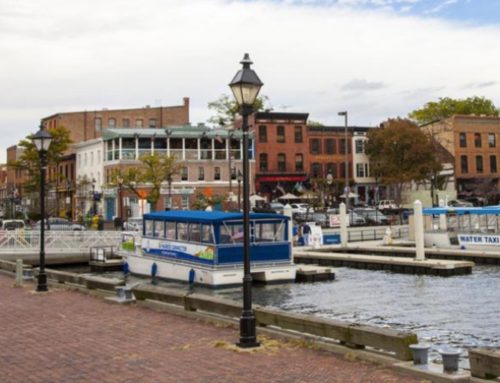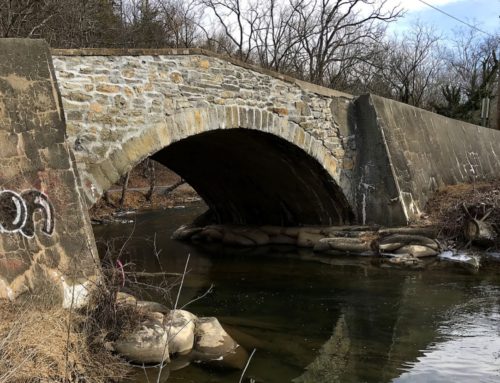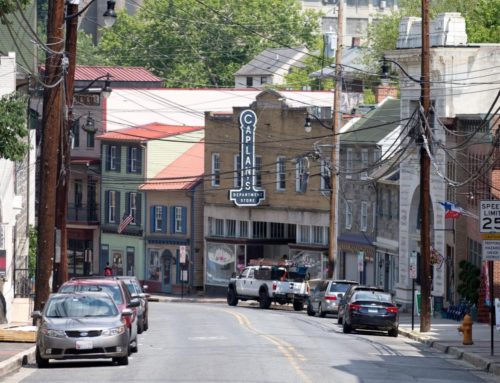Excerpt from the Baltimore Sun:
When Denise Cortis moved into her home on Deanwood Avenue in 2008, she believed “certain protections” existed to preserve the quiet, narrow, scenic Ellicott City road that is nested with late Victorian and American Foursquare homes.
A plan to build 13 single family houses with five open space lots on nearly nine acres of land zoned for its environmentally sensitive and historic nature is proof that things “can change overnight,” Cortis said.
The project, on the Lacey property on Church Road, clears two of nearly four acres of existing forest while retaining 4.7 acres of open space. The property leads out to Deanwood Avenue and is one-half mile north of Main Street.
The county’s planning board will evaluate the plan on Thursday based on the extent to which it protects environmental and historic resources, minimizes site disturbance and other factors tailored to the area’s historic nature.
In a May 19 report, the county’s Department of Planning and Zoning recommended to approve the plan, which the county’s report said “protects environmental and historic resources” by leaving open space, maintaining existing topography and buffering the development from the road and the neighborhood.
The developer struck compromises with residents through several meetings with residents and the Historic Preservation Commission over the last three years as the plan evolved, said Stephanie Tuite, a representative of the land consultant, Fisher, Collins and Carter, Inc.
Open space will buffer new development from neighboring homes. Driveways will feed through the neighborhood instead of each driveway leading to the main road, requiring retaining walls along a part of the site where the land is particularly uneven to make space for driveways. The developer also reduced the number of houses by one while providing a new public road for the development, said Tuite.
“We feel we have worked a lot with the community to address their concerns and still achieve a lot of yield desired by the developers,” said Tuite.
However, residents, who largely oppose the density of the proposal, said the development does not preserve the historic character of the neighborhood and the local scenic road.
Saying the historic district should not be reduced to “just old homes and architectural details,” members of the Howard County Historic Preservation Commission, an advisory body, expressed concerns about the impact of the development in an April letter to the Department of Planning and Zoning.
“If we remove open spaces, the character of Ellicott City begins to deteriorate. Quickly, subdivision by subdivision, [the district] we once treasured will erode into a non-significant tract of development,” the commission members wrote.
Councilman Jon Weinstein, who represents the Ellicott City historic district, said residents expressed “legitimate concerns” characteristic of other developments, and that point to overarching concerns about how development is done in the historic district.
“Whether it’s five or 10 years, we need to be prepared for what could be major development of that area,” said Weinstein, citing the uncertain future of the Circuit Courthouse in the historic district. The county plans to build a new courthouse, but plans have not been finalized.
Residents worry additional traffic created by the development will create unsafe road conditions, especially for cyclists and walkers who frequent the road.
“When you start to put new development in, the historic setting slowly starts to chip away,” said Cortis. “We moved here because of the historic nature. We’re just trying to preserve that.”
Todd Taylor, whose house abuts the proposed development, said cars frequently stop and pull over into driveways and yards to allow one car to easily pass the narrow road. The problem is especially prominent during events at the Patapsco Female Institute at the mouth of the road.
“We will be left with it. We’re here for life,” said Elizabeth Walsh, who moved in her house on Church Road in 2009.
The land steeply slopes and includes a stream at the center that flows south and is part of the Patapsco River watershed, which will not be disturbed by the development, according to the staff report. Through a waiver from the county, the developer plans to grade steeps slopes to make way for three houses.
The development sits across from The Woods of Park Place neighborhood of roughly 15 houses on six acres, which drew strong opposition from the community in the early 2000s.
The Lacey property includes a 75-foot setback from the main road, a setback significantly less than neighboring developments which have a 100-foot setback, according to Gary Segal, who lives on Church Road.
“Our beautiful ecosystem is slowly being destroyed,” Segal said, citing widening of river beds, road erosion and decaying slopes.
The county’s efforts to dump stone or asphalt on steep slopes and create curbs to direct water flow have “exacerbated” or “redirected” runoff problems to other locations, said Segal.
Included in an area that is in the National Register of Historic Places, the property was part of Linwood Farm that dates back to the 1800s, and was later subdivided into separate lots. Linwood Center, a school for children with autism that opened nearly 60 years ago, is nearby the development.
An abandoned brick cottage built in the 1930s, a swimming pool originally designed as a bomb shelter and a partially collapsed barn structure will be removed if the development moves forward.



